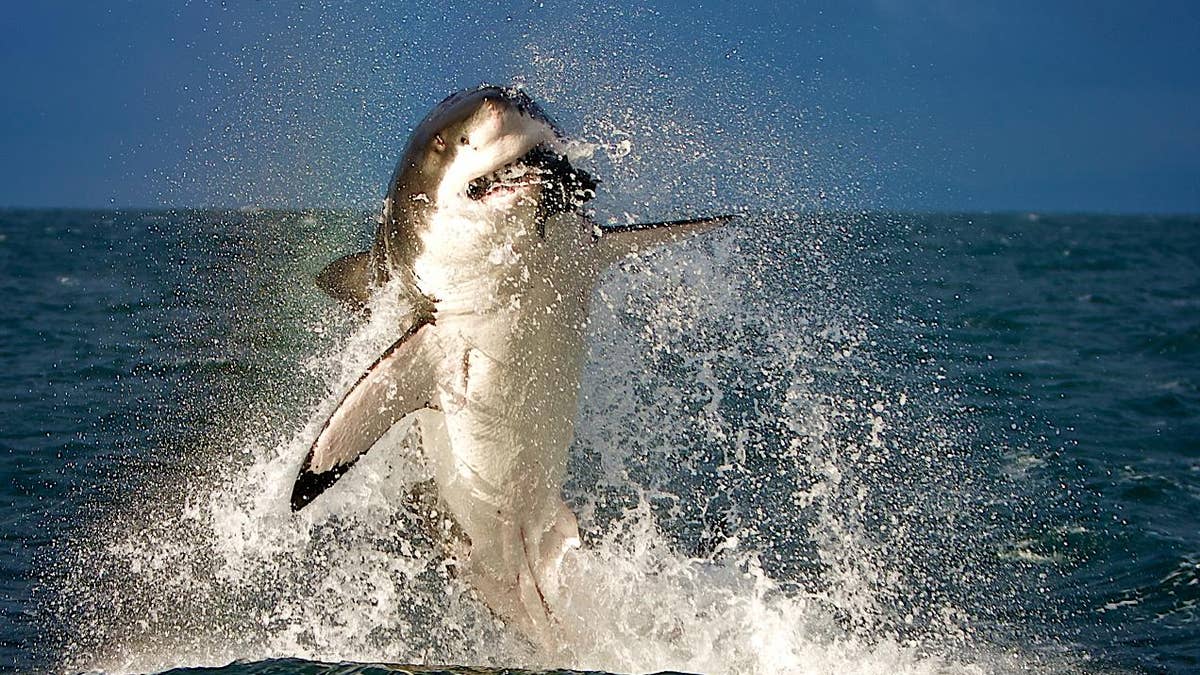
(Neil Wilkinson)
The great white shark's flesh-tearing teeth get all the glory for the predator's ferocity. But new research suggests there's much more finesse under the hood to explain a shark's bite.
Turns out, the arrangement of their jaw muscles lets great white sharks maintain loads of bite force no matter how wide their mouths are open -- mammals, like us, can't do that.
The study also suggests that only adult great whites can take advantage of this full biting power. While teenage great whites might have the power to chomp down on an adult-size meal, their jaws wouldn't stand up to the stresses generated.
"This unique jaw muscle arrangement in sharks will open many questions to its role in the feeding behavior of other shark species and how they have evolved a range of successful feeding strategies," said lead researcher Toni Ferrara, a doctoral student at the University of New South Wales in Australia.
The findings are detailed in the Journal of Biomechanics.
Toothy sharks
Shark biologists typically look at a shark's teeth to figure out what the predator eats. For instance, "great whites have broad triangular shaped teeth that act like a saw, while sandtigers have needle shaped teeth that grab and puncture prey," Ferrara told LiveScience.
The researchers used computer simulations to get a closer look at the feeding behaviors of two shark species — the harmless grey nurse shark (also called the sandtiger) and a sub-adult great white shark.
The scientists found the sharks' muscles are separated into upper and lower parts by a tendon, which pulls the muscles so that they are perpendicular in relation to where they attach to the jaws and where they meet that pulling tendon.
Think about pushing a refrigerator across the floor, Ferrara said. You'd get the most bang for your muscle strength if you held your arms perpendicular to the fridge rather than at some other angle.
Snapping jaws
These two shark species, it turns out, use their jaw-muscle setup in different ways to sustain their particular dining habits. As a great white opens its mouth, the muscles hit this sweet spot immediately and stay that way. "This lets great whites have high bite forces over a wide range of gape angles — how wide the mouth is open," Ferrara said.
The finding also helps explain how great whites feast on such a broad buffet that ranges from small fish to larger marine mammals.
Sandtigers, in contrast, have mouth muscles that start out at more acute angles, meaning it takes longer and a wide-open mouth before they're in place for a forceful bite. When a tasty treat swims by, a nurse shark stretches its mouth way open to spring-load the jaw before rapidly snapping down on the small prey.
Just because a shark can do something doesn't mean they do. When the researchers looked at the stresses generated by different bite forces, they found no problems for sandtigers since they'd never mash down on anything heftier than a little fish. But if a great white had a hankering for a seal, for instance, there would be a high stress associated with catching that item. To keep their jaws intact, great whites have layers of mineralized cartilage that surrounds softer cartilage to their jaws, in turn, strengthening the jaws.
Adolescent great white sharks have yet to build up the jaw protection, and so they keep to small fare. "This [mineralization] happens right at the same time that these sharks start switching to a diet that includes marine mammals," Ferrara said.
* The World's Deadliest Animals
* 10 Reasons Great White Sharks Are Great
* How Great White Sharks Stumbled into the Mediterranean
Copyright © 2010 LiveScience.com. All Rights Reserved. This material may not be published, broadcast, rewritten or redistributed.




















